Business
The true cost of cyber hacking on businesses
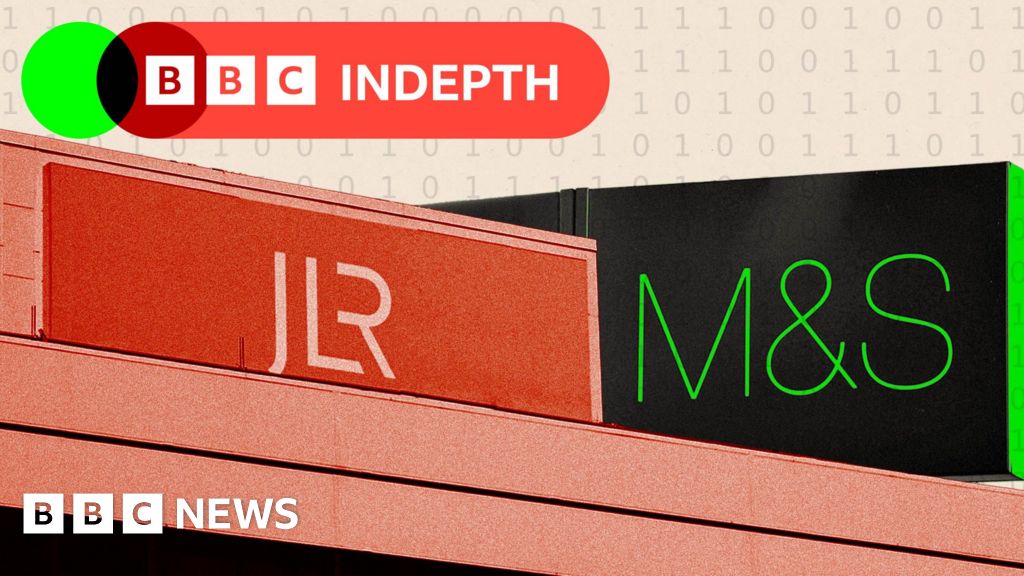
 Theo LeggettInternational Business Correspondent
Theo LeggettInternational Business Correspondent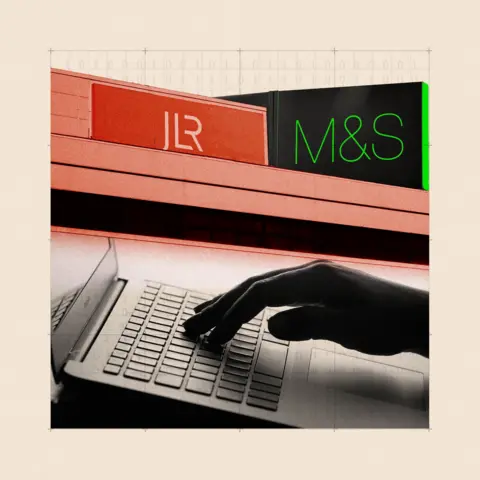 BBC
BBCThe first day of September should have marked the beginning of one of the busiest periods of the year for Jaguar Land Rover.
It was a Monday, and the release of new 75 series number plates was expected to produce a surge in demand from eager car buyers. At factories in Solihull and Halewood, as well as at its engine plant in Wolverhampton, staff were expecting to be working flat out.
Instead, when the early shift arrived, they were sent home. The production lines have remained idle ever since.
Though they are expected to resume operations in the coming days, it will be in a slow and carefully controlled manner. It could be another month before output returns to normal. Such was the impact of a major cyber attack that hit JLR at the end of August.
It is working with various cyber security specialists and police to investigate, but the financial damage has already been done. Over a month’s worth of worldwide production was lost.
Analysts have estimated its losses at £50m per week.
 Getty Images
Getty ImagesFor a company that made a £2.5bn profit in the last financial year, and which is owned by the Indian giant Tata Group, the losses should be painful but not fatal. But JLR is not an isolated incident.
So far this year there has been a wave of cyber attacks targeting big businesses, including retailers such as Marks & Spencer and the Co-op, as well as a key airport systems provider. Other high profile victims have included the children’s nursery chain Kido, while last year incidents involving Southern Water and a company that provided essential blood tests to the NHS raised serious concerns about the vulnerability of critical infrastructure and services.
In all, a government run survey on cyber security breaches estimates 612,000 businesses and 61,000 charities were targeted across the UK. So just how much are attacks like these costing businesses and the economy?
And could it be, as one expert analyst puts it, that this year’s major attacks are the result of a “cumulative effect of a kind of inaction” on cyber security from the government and businesses that is now starting to bite?
Pyramid of suppliers affected
What is significant about an attack on the scale of the one that hit JLR is just how far the consequences can stretch.
The company sits at the top of a pyramid of suppliers, thousands of them. They range from major multinationals, such as Bosch, down to small firms with a handful of employees, and they include companies which are heavily reliant on a single customer: JLR.
For many of those firms, the shutdown represented a very real threat to their business.
In a letter to the Chancellor on 25 September, the Business and Trade Committee warned that smaller firms “may have at best a week of cashflow left to support themselves”, while larger companies “may begin to seriously struggle within a fortnight”.
Industry analysts expressed concerns that if companies started to go bankrupt, a trickle could soon become a flood – potentially causing permanent damage to the country’s advanced engineering industry.
Resuming production does not automatically mean the crisis is over either.
“It has come too late,” explains David Roberts, who is the Chairman of Coventry-based Evtec, a direct supplier to JLR, with some 1,250 employees.
“All of our companies have had six weeks of zero sales, but all the costs. The sector still desperately needs cash.”
From Co-op to Marks & Spencer
A recent IBM report, which looked at data breaches experienced by about 600 organisations worldwide found that the average cost was $4.4m (or £3.3m).
But JLR is far from an outlier when it comes to high-profile cyber attacks on an even greater scale. Marks & Spencer and the Co-op supermarket chain this year are estimated to have cost £300 million and £120 million respectively.
Over the Easter weekend in April, attackers managed to gain entry to Marks & Spencer’s IT systems via a third-party contractor, forcing it to take some networks offline.
Initially, the disruption seemed relatively minor – with contactless payment systems out of action, and customers unable to use its ‘click and collect’ service. However, within days, it had halted all online shopping – which normally makes up around a third of its business.
It was described at the time as “almost like cutting off one of your limbs”, by Nayna McIntosh, former executive committee member of M&S and the founder of Hope Fashion.
 Bloomberg via Getty Images
Bloomberg via Getty ImagesWhen the Co-op supermarket chain was hit, the same group of hackers claimed responsibility.
It was, they suggested, an attempt to extort a ransom from the company by infecting its networks with malicious software. However the IT networks were shut down quickly enough to avoid significant damage.
As the criminals angrily described it to the BBC, “they yanked their own plug – tanking sales, burning logistics, and torching shareholder value”.
According to Jamie MacColl, a cyber expert at the security research group, the Royal United Services Institute (RUSI), it is no surprise to see major businesses being targeted in this way.
He says it is the result of hackers being easily able to get hold of so-called ransomware (software which can lock up or encrypt a victim’s computer networks until a ransom is paid).
“Historically, this kind of cyber crime… has mostly been carried out by Russian-speaking criminals, based in Russia or other parts of the former Soviet Union”, he explains.
“But there’s been a bit of a change in the last couple of years where English-speaking, mostly teenage hackers have been leasing or renting ransomware from those Russian-speaking cyber criminals, and then using it to disrupt and extort from the businesses they’ve gained access to.
“And those English-speaking criminals do tend to focus on quite high-profile victims, because they’re not just financially motivated: they want to demonstrate their skill and get kudos within this quite nasty sort of hacking ecosystem that we have.”
Weak spots of big business
What makes companies like Jaguar Land Rover and Marks & Spencer particularly vulnerable is the way in which their supply chains work.
Carmakers have a long tradition of using so-called “just-in-time delivery”, where parts are not held in stock but delivered from suppliers exactly where and when they are needed.
This cuts down on storage and waste costs. But it also requires intricate coordination of every aspect of the supply chain, and if the computers break down, the disruption can be dramatic.
Likewise, a retailer like Marks & Spencer relies on a carefully coordinated supply chain to guarantee customers the right quantities of fresh produce in the right places – which similarly proves vulnerable.
 Reuters
Reuters“Other industries have this model too: electronics and high-tech, because it’s expensive and risky to hold inventory for a long time due to obsolescence. And then other industrial firms, such as in aerospace, for similar reasons to automotive,” explains Elizabeth Rust, lead economist at Oxford Economics.
“So they’re a bit more vulnerable to supply chain disruption from a cyber attack.”
But she points out this is not the case for industries such as pharmaceuticals, where regulators require firms to hold minimum levels of stock.
Rethinking lean production
Andy Palmer, a former chief executive of Aston Martin who has spent decades working in the manufacturing sector, thinks the lean production models in the car and food industries need a rethink.
It is a major risk, he says, when you have “these systems where everything is tied to everything else, where the waste is taken out of every stage… but you break one link in that chain and you have no safety.
“The manufacturing sector has to have another look at the way it tackles this latest black swan”, he says, referring to an event that is unforeseen but which has significant consequences.
But according to Ms Rust, businesses are unlikely to change the way their supply chains operate.
“Cyber attacks are really expensive… but shifting away from just-in-time management is potentially even more expensive. This is hundreds of millions, possibly, that a firm would have to incur annually”.
She believes the costs would also make it a steep challenge for regulators to demand such changes.
‘The cumulative effect of inaction’
In late September a ransomware attack on American aviation technology firm Collins Aerospace caused serious problems at a number of European airports, including London Heathrow, after it disabled check-in and baggage handling systems.
The problem was resolved relatively quickly, but not before a large number of flights had been cancelled.
Industry sources warn that Europe’s airspace and key airports are so heavily congested that disruption in one area can quickly spread to others – and the costs can quickly add up.
In this instance, the knock-on effects were largely confined to widespread delays and flight cancellations. But it nods to a bigger question of what happens if a hack on critical infrastructure paralyses financial, transport or energy networks, potentially leading to huge economic costs – or worse?
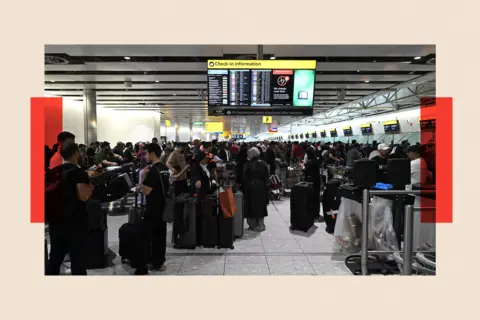 AFP via Getty Images
AFP via Getty Images“I think the worst-case scenario is probably something affecting financial services or energy provision, because of the potential cascading effects of either of those two”, says RUSI analyst Jamie MacColl.
“The good news is the financial sector is by far the most heavily-regulated sector in the UK for cyber security. And I think it’s quite telling, there’s rarely been a very impactful cyber attack on a Western bank.”
The outlook, were there an attack on the energy sector, is not clear.
A 2015 study by Lloyds Bank, entitled “Business Blackout”, modelled the impact of a hypothetical attack on the US power grid, concluding that economic losses could exceed $1 trillion (£742bn). However Mr MacColl believes that in the UK, there is probably enough spare capacity in the grid to deal with a cyber incident.
More concerningly, Mr MacColl thinks the UK has had “quite a laissez-faire approach to cyber security over the past 15 years”, with the issue given little priority by successive governments.
He believes that this year’s major attacks may be the “cumulative effect of a kind of inaction on cyber security, both from the government and from businesses, and it’s sort of really starting to bite now”.
That inaction, he says, needs to change, with both regulators and large businesses taking more responsibility.
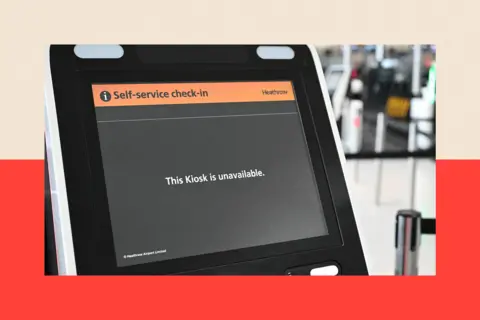 Anadolu via Getty Images
Anadolu via Getty ImagesIn July last year the government did announce plans to introduce a Cyber Security and Resilience bill but its passage to becoming law has been repeatedly delayed.
In May, GCHQ’s National Cyber Security Centre published a report warning about the growing impact of cyber threats from hackers using artificial intelligence-based tools. It suggested that over the next two years, “a growing divide will emerge between organisations that can keep pace with AI-enabled threats, and those that fall behind – exposing them to greater risk, and intensifying the overall threat to the UK’s digital infrastructure.
However, what worries Jamie MacColl most are the sorts of attacks we haven’t yet thought to protect against.
“I would be more concerned about the sort of company that is the only business that provides a particular service, but that we don’t really know about, and that isn’t regulated as critical national infrastructure”, he says.
An attack on one of these less glamourous economic pivots, he argues, could have huge ramifications through the wider economy.
“That’s the sort of thing that would keep me up at night,” he says. “The single point of failure that we are not aware of yet.”
Top image credit: PA
BBC InDepth is the home on the website and app for the best analysis, with fresh perspectives that challenge assumptions and deep reporting on the biggest issues of the day. And we showcase thought-provoking content from across BBC Sounds and iPlayer too. You can send us your feedback on the InDepth section by clicking on the button below.
Business
India’s PMS & AIF Industry Records Decade-High Growth; GIFT City Emerges As Capital Gateway: Report
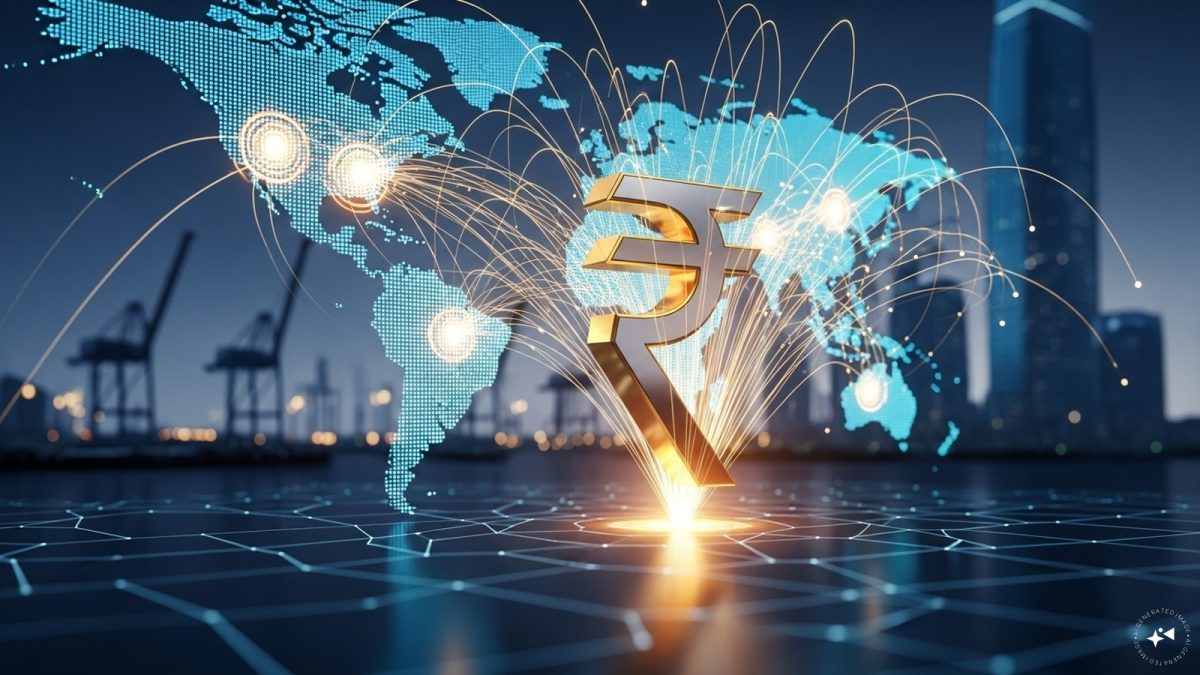
Last Updated:
AIFs and PMS see rapid growth among HNIs, with AIF assets reaching Rs 15,05,372 crore by 2025.

Alternative Investments Surge as PMS–AIF Ecosystem Enters High-Growth Phase
Alternative Investment Funds (AIFs) and Portfolio Management Services (PMS) are drawing investors interest in current times, especially high net worth individuals (HNIs). According to data from the PMS & AIF Special Edition 2025, AIFs have grown 49.23 per cent CAGR from Rs 27,484 crore in 2015 to Rs 15,05,372 crore in 2025, majorly driven by category II and III. The last two categories of AIFs covered private equity, private credit, hedge funds and structured products.
Category II alone expanded to Rs 11,20,589 crore, while Category III rose to Rs 2,92,398 crore, the report added.
Meanwhile, PMS assets under management jumped from Rs 1.27 crore in 2015 to Rs 8.37 crore by September 2025, reflecting a growth of 20.75 CAGR.
The market is set to increase in leaps and bounds hereafter, thanks to rising affluent investors. The number of Indians with over $1 million in net worth is expected to rise to 19.4 lakh by 2030, the report added. It would lead to strong demand for customised strategies, diversification, and higher alpha.
Meanwhile, GIFT City IFSC has emerged as a major hub for cross-border capital. AIF commitments raised at GIFT jumped from $5.5 billion in 2023 to $26.3 billion by 2025. Category III funds, supported by feeder structures, showed exceptional acceleration, hitting $10.15 billion by mid-2025. Inbound investments through GIFT rose more than five times during the same period.
The report highlights that India’s alternative investment ecosystem is now moving from “choice to necessity”, as investors seek resilience and long-term wealth creation. With rising wealth, strong regulation and global integration, the next decade is expected to be dominated by alternatives.

Varun Yadav is a Sub Editor at News18 Business Digital. He writes articles on markets, personal finance, technology, and more. He completed his post-graduation diploma in English Journalism from the Indian Inst…Read More
Varun Yadav is a Sub Editor at News18 Business Digital. He writes articles on markets, personal finance, technology, and more. He completed his post-graduation diploma in English Journalism from the Indian Inst… Read More
November 23, 2025, 17:14 IST
Read More
Business
Rail fares to be frozen in England next year
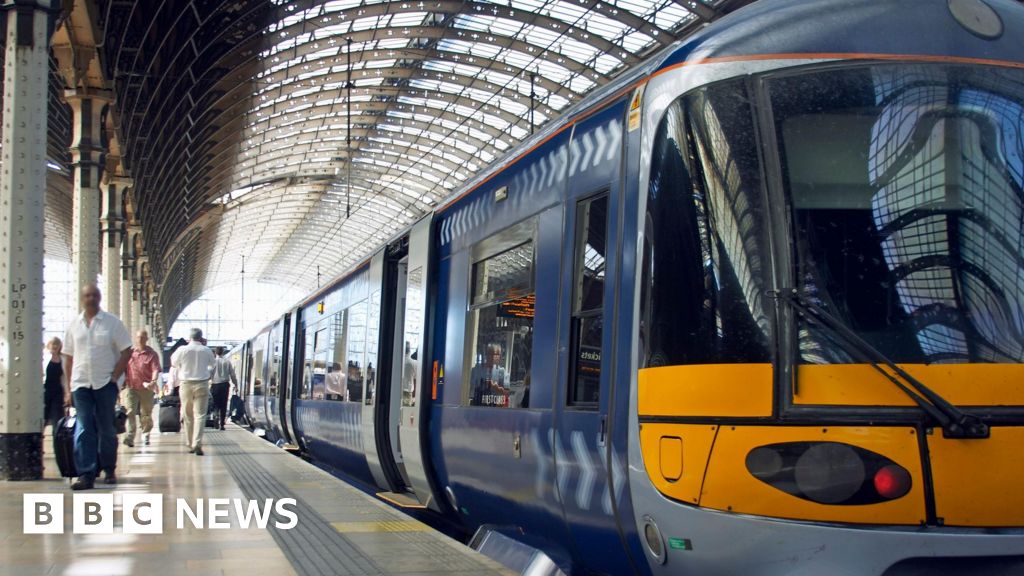
Rail fares in England next year are to be frozen for the first time in 30 years, the government has announced.
The freeze until March 2027 will apply to regulated fares, which includes season tickets and off-peak returns.
The most recent fare rise, in March 2025, was 4.6%. Rail fares traditionally have gone up in January, based on the July rate of the retail price index (RPI) + 1% – although this formula has not always been followed.
The announcement comes days before the chancellor sets out the government’s financial plans in the Budget on Wednesday, with Rachel Reeves indicating that cutting the cost of living will be a key focus.
However, at the same time the chancellor is also widely expected to increase taxes to help fill a multibillion-pound gap in her spending plans.
About 45% of rail fares are regulated by the government in England, Wales and Scotland – but the freeze only relates to travel in England. The announcement also only applies to services run by England-based train operating companies.
Regulated fares include season tickets covering most commuter routes, some off-peak return tickets on long-distance journeys and flexible tickets for travel in and around major cities.
Train operators are free to set prices for unregulated fares, but they typically rise by similar amounts.
The government said freezing rail fares was intended to “directly limit inflation” by holding down “a major component of everyday costs”.
Since 2021, the annual increase has come in March instead of January.
A government source acknowledged it was possible unregulated fares would still rise, but insisted they usually followed regulated fares.
Unregulated fares increased by 5.5% in the year to March 2025, 1.1% above regulated fares – with a total increase in rail fares of 5.1% in that period.
Challenged over whether other ticket prices would rise to compensate for the freeze on regulated fares, Transport Secretary Heidi Alexander insisted the policy was “fully funded”.
She told the BBC’s Sunday with Laura Kuenssberg programme that regulated fares have tended to inform the price of unregulated fares and they normally “track against each other”.
Pressed on whether the policy would mean the government has less to spend on upgrading the transport system, Alexander said investment in the rail network would be protected “because we recognise that investing in the infrastructure of this country is the right long-term decision”.
The Rail Delivery Group, a representative body made up of the UK’s rail operators, said the freeze would be “good news for customers”.
“We want our railways to thrive, that’s why we’re committed to working with government to ensure upcoming railway reforms deliver real benefits for customers,” a spokesperson said.
Since 1996, the government has regulated some train fares following the privatisation of British Rail.
The freeze marks the first point since then that fares will have been frozen, although there have been periods where price increases were below RPI, and a dip in prices following the financial crash in 2010.
The government estimates that the move will save commuters on more expensive routes more than £300.
The chancellor said the freeze was being put in place to help ease cost of living pressures, and make “travelling to work, school or to visit friends and family that bit easier”.
The transport secretary said it was part of “wider plans to rebuild Great British Railways”.
Great British Railways is a public body which is in the process of being set up, and is part of the government’s plans to bring parts of the railway system into public ownership.
The government has said it will take over the running and management of the tracks and trains, “ending years of fragmentation, driving up standards for passengers, and making journey easier and better value for money”.
The government has said part of its plans for the new body is to “gradually move away from annual blanket increases”.
Labour said passengers had faced “relentless” fare increases every year under the previous Tory government.
However, shadow transport secretary Richard Holden said: “In government, the Conservatives kept fares on the right track with below-inflation rises and consistently called for no further hikes to protect hard-working commuters.”
Business
8th Pay Commission: NC JCM Seeks OPS Restoration, Revised ToR And Jan 1, 2026 Rollout Date

Last Updated:
NC JCM urges Prime Minister Narendra Modi and Nirmala Sitharaman to amend 8th Pay Commission ToR, restore Old Pension Scheme, and more.

8th Pay Commission: The ToR acts as the foundation document of any pay commission.
8th Pay Commission: As the 8th pay commission has begun working after the notification of Terms of Reference (ToR) last month, the National Council (Staff Side) of the Joint Consultative Machinery (NC JCM) has sought the intervention of the Prime Minister Narendra Modi and Finance Minister Nirmala Sitharaman. The body has urged them to amend major changes to the Terms of Reference (ToR) of the 8the Pay Commission, according to a report of Economic Times.
It has also sought restoration of the Old Pension Scheme (OPS) for central government employees under National Pension System (NPS).
According to ET report, Shiva Gopal Mishra, secretary of NC JCM, in the letter to the PM and FM suggested amendments to the 8th Pay Commission ToR, calling them important to serve the ‘large interest’ of current and retired central government employees.
NC JCM has sought amendments in the matter related to restoration of “expectations of stakeholders” clause that existed in the 7th CPC, removal the phase ““unfunded cost of non-contributory pension schemes”, declaration of January 1, 2026 as the implementation date, and offer 20% interim relief to employees and pensioners.
The body as quoted by ET said that the missing of “expectations of stakeholders” clause sends a discouraging signal.
In the letter, the body has urged to restore the commutation after 11 years with 5% additional pension every five years after retirement and revision coverage for all pensioners.
The body has sought the restoration of the OPS for those who joined government service on or after January 01, 2024. The body said it’s reflect the long-standing demand for financial security after retirement.
Headed by Justice (Retd.) Ranjana Desai, the 8th Pay Commission is expected to submit the recommendations on salaries, basic pay, fitment factor, and all of that to within 18 months. It couldn’t be possible to submit before mid-2027 and then recommendations will be passed through the Cabinet before becoming effective retrospectively from January 01, 2026.

Varun Yadav is a Sub Editor at News18 Business Digital. He writes articles on markets, personal finance, technology, and more. He completed his post-graduation diploma in English Journalism from the Indian Inst…Read More
Varun Yadav is a Sub Editor at News18 Business Digital. He writes articles on markets, personal finance, technology, and more. He completed his post-graduation diploma in English Journalism from the Indian Inst… Read More
November 23, 2025, 14:17 IST
Read More
-

 Tech1 week ago
Tech1 week agoNew carbon capture method uses water and pressure to remove CO₂ from emissions at half current costs
-

 Business1 week ago
Business1 week agoThese 9 Common Money Mistakes Are Eating Your Income
-

 Tech6 days ago
Tech6 days agoTwo-step flash Joule heating method recovers lithium‑ion battery materials quickly and cleanly
-

 Fashion1 week ago
Fashion1 week agoAfter London, Leeds and Newcastle, next stop Glasgow for busy Omnes
-

 Sports1 week ago
Sports1 week agoTexas A&M officer scolds South Carolina wide receiver after touchdown; department speaks out
-

 Sports1 week ago
Sports1 week agoApple scrapping MLS Season Pass service in ’26
-

 Business1 week ago
Business1 week agoWhat’s behind Rachel Reeves’s hokey cokey on income tax rises?
-

 Tech1 week ago
Tech1 week ago50% Off DoorDash Promo Code for November 2025






